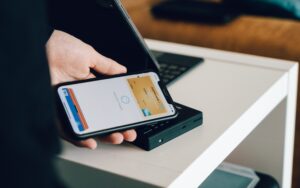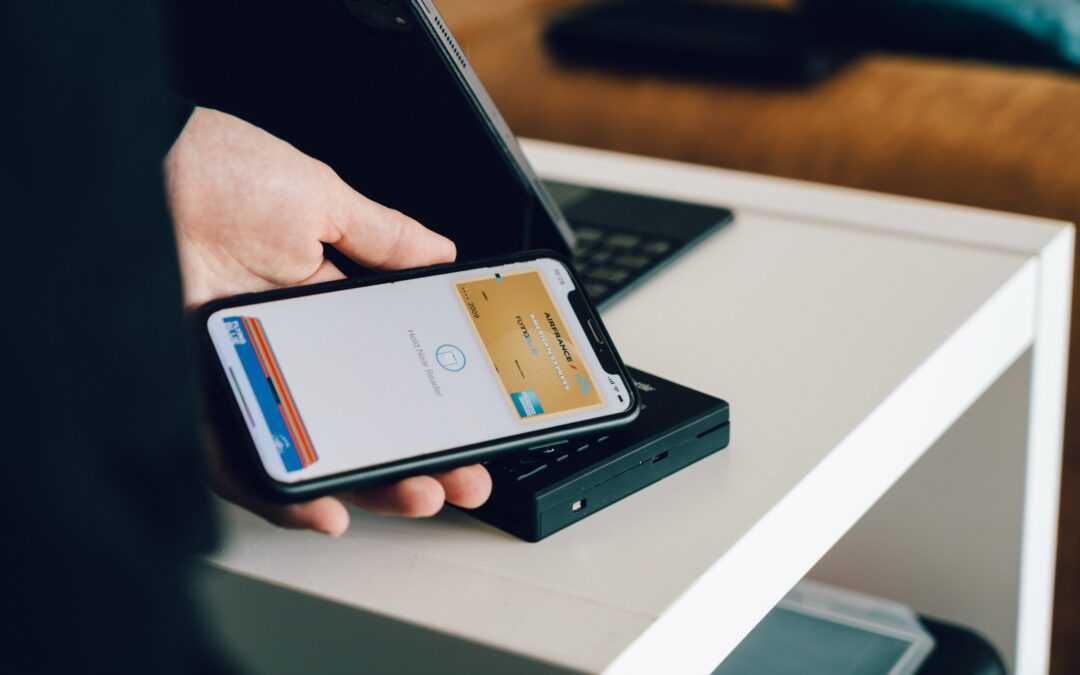Shoppers worry about touching payment machines, which is why contactless payment options have helped relieve some of their worry.
First, What is Contactless Payment?

According to Investopedia, “The term contactless payment refers to a secure method for consumers to purchase products or services using a debit, credit, smartcard, or another payment device by using radio frequency identification (RFID) technology and near-field communication (NFC).
“This payment method works by tapping a payment card or other device near a point-of-sale terminal equipped with contactless payment technology. Contactless payment is also referred to as tap-and-go or tap by some banks and retailers.”
By simply tapping a card or other payment device, there is a smaller chance people will come into contact with germs and carry a pathogen with them outside of the store. Due to COVID-19’s high transmissibility and the Delta variant surge, contactless payment options have become a preference for customers, ultimately making it more of a priority for C-store owners as well.
What Are Popular Examples of Contactless Payment Options?

One popular example of contactless payment is Apple Pay. To set it up, an individual just has to add a credit or debit card to their wallet app on their device. That’s it. Just like that, people are carrying their cards digitally rather than physically.
You can even use Apple Pay through your Apple Watch.
Apple Pay is not the only digital contactless option. Popular alternatives include Google Pay, Samsung Pay, and Paypal. People have switched to using these contactless payment options due to simplicity as well as cleanliness.
In addition to digital payment options, there are also contactless cards. Rather than swiping your card through the card reader, you can just tap your card on the point-of-sale terminal. It is simple and contact free.
Luckily, the technology for digital payments is the same for contactless cards, so C-store owners don’t need separate software.
Why is it Important For C-Stores to Have Contactless Payment Options?

Research shows a major increase in use and desire for contactless payment. According to the World Payments Report by Capgemini, digital payments grew by a staggering 53% in 2020. Consumers are transitioning from physical to digital payments and this trend will continue even after COVID-19 isn’t as prominent around the world.
Capgemini’s 2020 August survey also stated that 64% of respondents used contactless cards throughout the pandemic, and 41% of people saying they used contactless cards for the first time. Consumers prioritized their safety as well as that of others by limiting contact while shopping.
Businesses have picked up this shift in consumer shopping habits and have responded by adding new payment options. According to a global Visa study, 67% of small businesses have adopted new payment services to adjust to COVID-19. It is crucial for businesses to pay attention to consumer needs and adapt their businesses to bring consumers in.
The same study concluded that 46% of consumers believe contactless payment options should be one of the top priorities for retailers to show they take safety measures seriously. Additionally, 48% of respondents said they refuse to shop at stores that don’t offer contactless payments. Clearly consumers want retailers to show that consumer safety is a top priority.
It’s important for C-store owners to pick up this trend and apply it to their own stores. Safety is important and consumers want to feel changes are being made to make them feel at ease while shopping during this unusual time.

